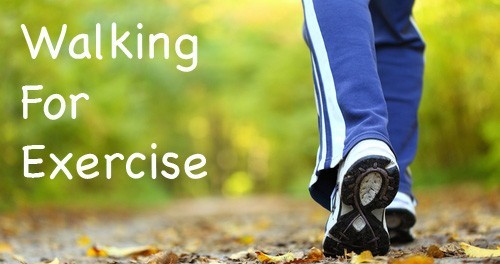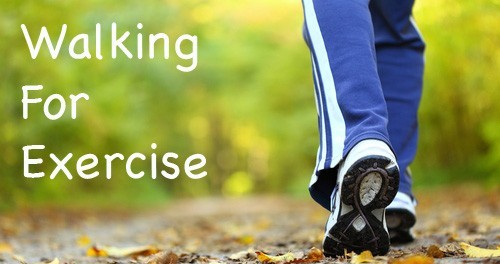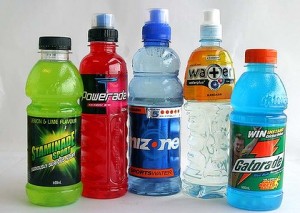Walk Talk Series
Day 9 – Using Your Arms – Energy
Review yesterday’s lesson about posture, and today add proper arm motion.
Walking Form – Arms
Arm motion can lend power to your walking, burning 5-10% more calories and acting as a balance to your leg motion.
- Bend your elbow 90 degrees.
- Hands should be loose in a partially closed curl, never clenched. Clenching your fists can raise your blood pressure and should be avoided.
- With each step, the arm opposite your forward foot comes straight forward, not diagonally. As the foot goes back, the opposite arm comes straight back.
- Keep your elbows close to your body – don’t “chicken wing.”
- Your forward hand should not cross the center point of your body.
- Your hand when coming forward should be kept low, not higher than your breastbone. Many poor examples of arm motion are seen with walkers pumping their arms up high in the air, this does not help propel you.
If at first you find adding arm motion tiring, do it for 5 to 10 minutes at a time and then let your arms rest. 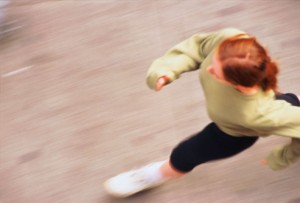
Today’s Walk
20-40 minute walk, at a comfortable pace, concentrating on your walking form. Refer to yesterday’s lesson on posture, and add the arms today.
- Warm up with 5 minutes at a very easy pace.
- Stretching 5 minutes.
- Now resume your walk at a comfortable pace.
- End with 5 minutes of gentle stretching.
One New Thing
Note one new thing today that you didn’t notice before – either about yourself, your walking partner, or something you see along the walk.
Energy Snacks
Walking is an endurance activity and you will need to replace energy fuel when walking for two hours or more. Energy bars and energy gels and sports drinks can replenish you. 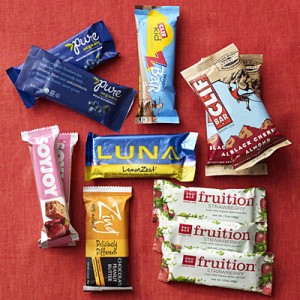
Energy bars have a mix of carbohydrate, protein, and fat. They are convenient for a snack when on a long walk, especially as a meal replacement. Most rely on either peanuts or soy for protein, with the soy ones targeted to women. The “outdoor” types generally are not chocolate covered and hold up better in your pack. Some of the original types really gave your jaws a workout to chew. Nutrition bars are intended as meal replacements, providing vitamins and minerals and often having more calories and protein.
Before You Buy or Make Energy Snacks
Energy Bars
Energy bars are enjoying huge success – with sales increases of 60% in recent years. They are a better snack choice than a candy bar or bag of chips. But they still are high in carbohydrates and sugars and lack the variety of vitamins and nutrients in whole foods such as an orange, banana, or package of baby carrots. Enjoy them once in awhile, or use as a meal replacement on a long walk. 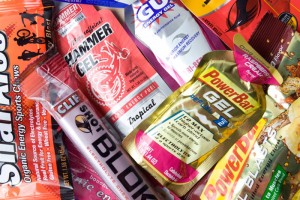
Energy Gels
Energy gels provide a carbohydrate blast designed especially for those on endurance events such as marathons. If you walk fast and breathe hard, a gel pack is safer than chewing/choking. Energy gels must be taken with water. New brands aim at being natural or being less cloyingly sweet than the original brands.
Energy and Sports Drinks
Water is not enough on a long walk. Sports drinks with sugar and salt better replace both water and body salt when walking for more than an hour, to prevent dehydration and hyponatremia (low salt). Steer clear of those with fancy additives and herbs, which do you no good on the walk, and look for those with proper salt and carbohydrate replacement. You can make your own sports drink cheaply. One type of drink isn’t recommended for exercise hydration – the popular high-caffeine energy drinks in small cans. They provide too much caffeine and not enough water.
Fruit Snacks
Take along fruit for the truly all-natural carbohydrate burst. Bananas are an excellent source of potassium. Apples, small oranges, and raisins are great packable snacks. Be sure to dispose of peels and cores appropriately – in the trash, not just tossed in the bushes. The drawback – high fiber in apples and raisins may get you, moving (bowels). Some may have stomach upset from various fruit.
Trail Mix and Gorp 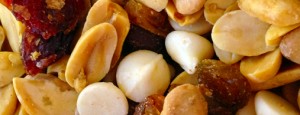
Trail mix is the original energy bar, with less melting. You can mix it up yourself or buy it in bulk or packaged. Generally it contains nuts for protein, raisins or other dried fruit for carbohydrates, and often chocolate or carob for taste. It has salt to replace electrolytes. Use portion control, as trail mix is often high in fat and calories – about 140 calories and 9 grams of fat per oz.
Make your own Protein Bars
This makes a meal replacement bar at a mere fraction of the cost of packaged protein bars and none of their glycerin, preservatives, or sugar, these low-fat bars are rich in fiber and taste great with a light spread of natural peanut butter across the top. Served with a protein drink, they make a well-balanced meal. 157 calories, 15 g protein, 5 g fat, 23 g carbohydrate, 4 g fiber.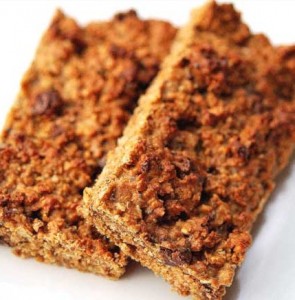
Difficulty: Easy
Time Required: 20 Minutes
Tips:
1. If you find you want a moister bar, use 1/2 cup of natural applesauce.
2. Kitchen Tip for Low-fat Baking:
Did you know you can replace the oil in a recipe with an equal amount of applesauce? Applesauce will add the same moisture of fat but not the added calories and it won’t alter the flavor.
Ingredients:
3 1/2 cups quick oats
1 1/2 cups powdered non-fat milk
4 scoops low carb. chocolate or vanilla protein powder
1 cup sugar-free maple syrup (Cozy Cottage, Cary’s or Howard’s)
2 egg whites, beaten
1/4 cup orange juice
1 teaspoon vanilla
1/4 c. natural applesauce
Preparation:
1. Preheat over to 325 and spray a baking sheet or 9×12 baking dish with non-stick spray. The 9×12 baking dish will yield thicker bars.
2. Mix oats, powdered milk, and protein powder in bowl and blend well.
3. In separate bowl, combine egg whites, orange juice, applesauce, and the sugar-free syrup and blend well.
4. Stir liquid mixture into dry ingredients until blended. The consistency will be thick and similar to cookie dough.
5. Spread batter onto pan and bake until edges are crisp and browned.
6. Cut into 10 bars and store in airtight container or freeze.
Nutritional Information Per Bar:
Calories-157,
Carbs-23g,
Protein-15g,
Fat-.5g,
Fiber-4g

